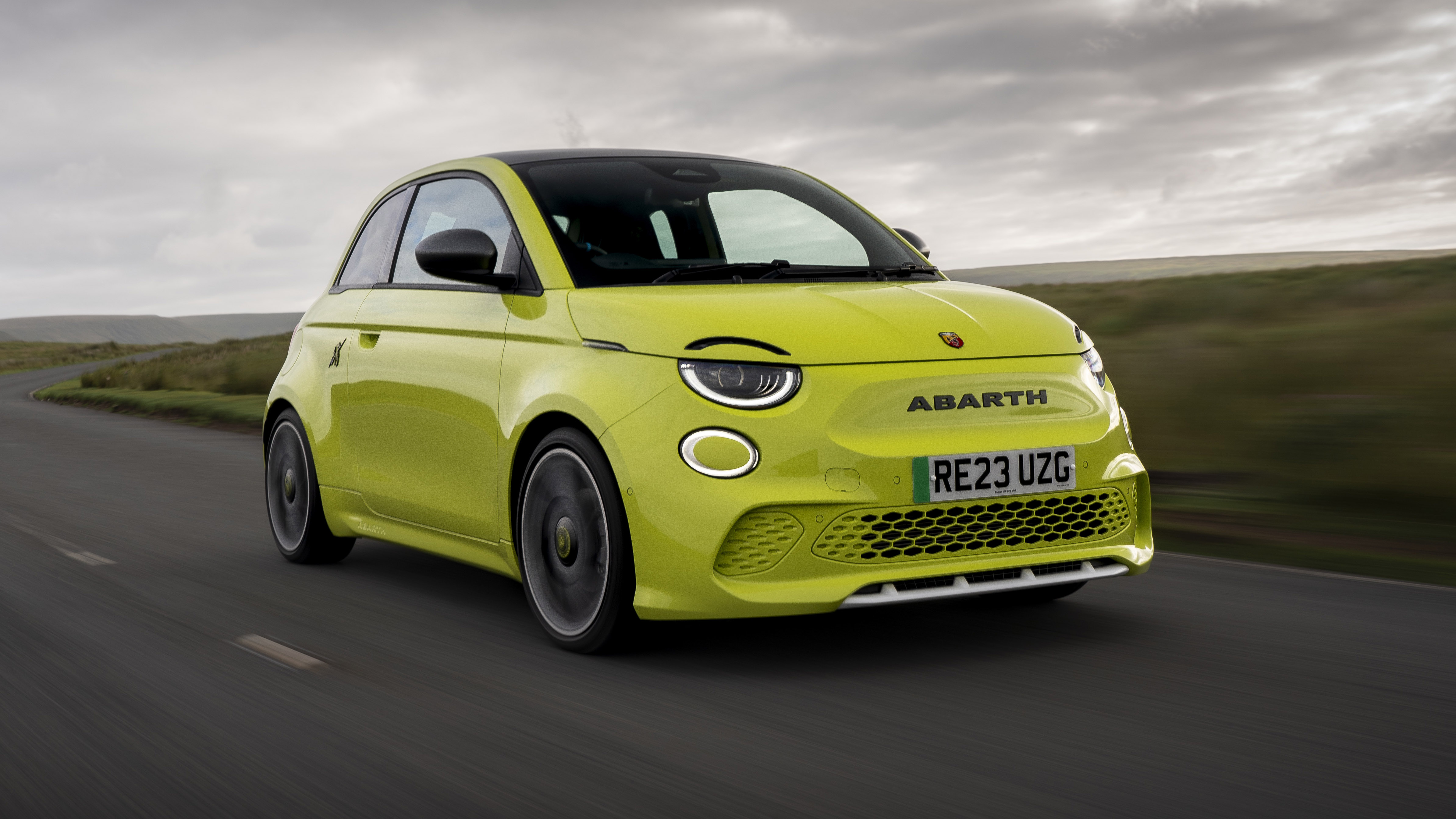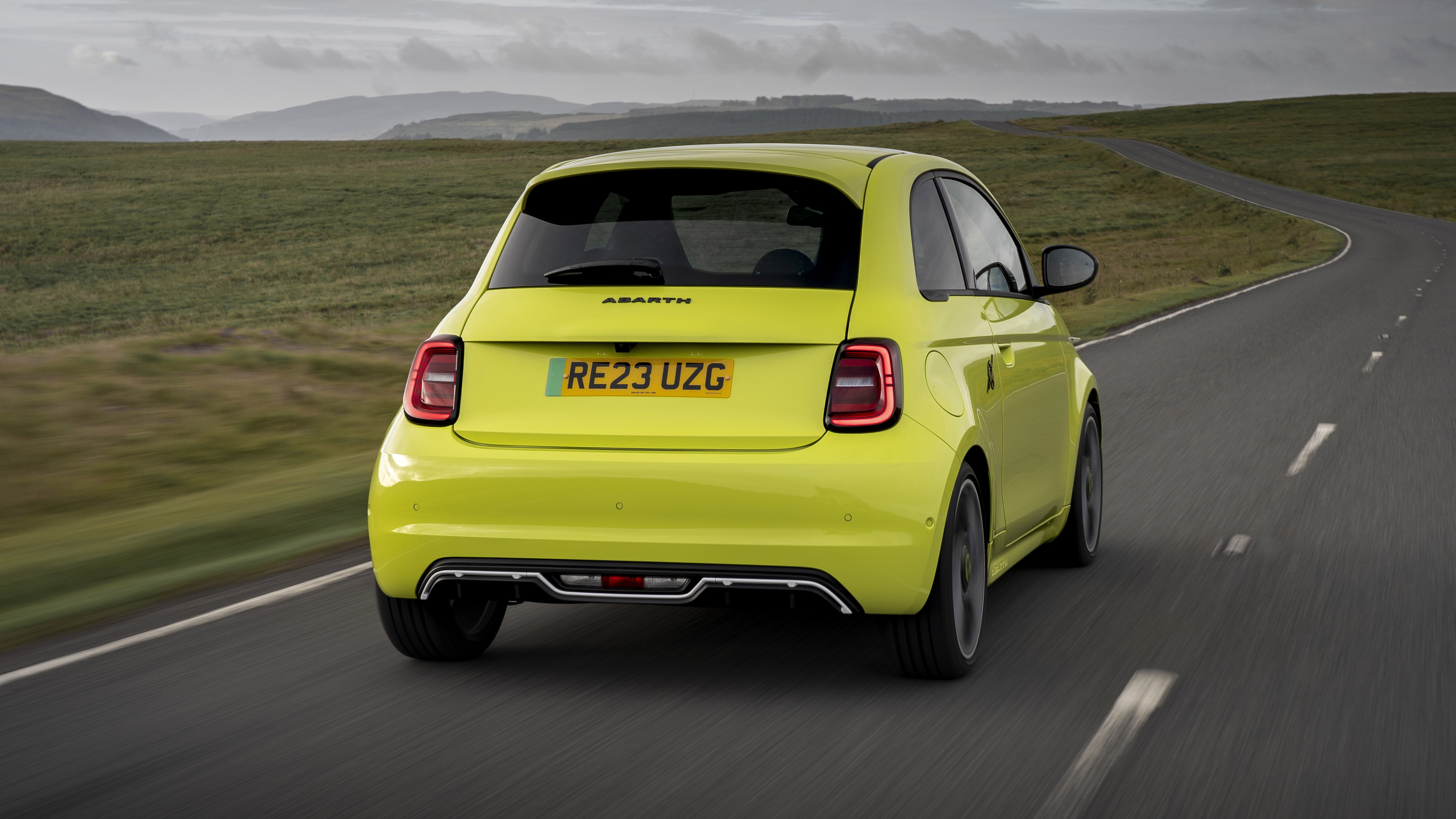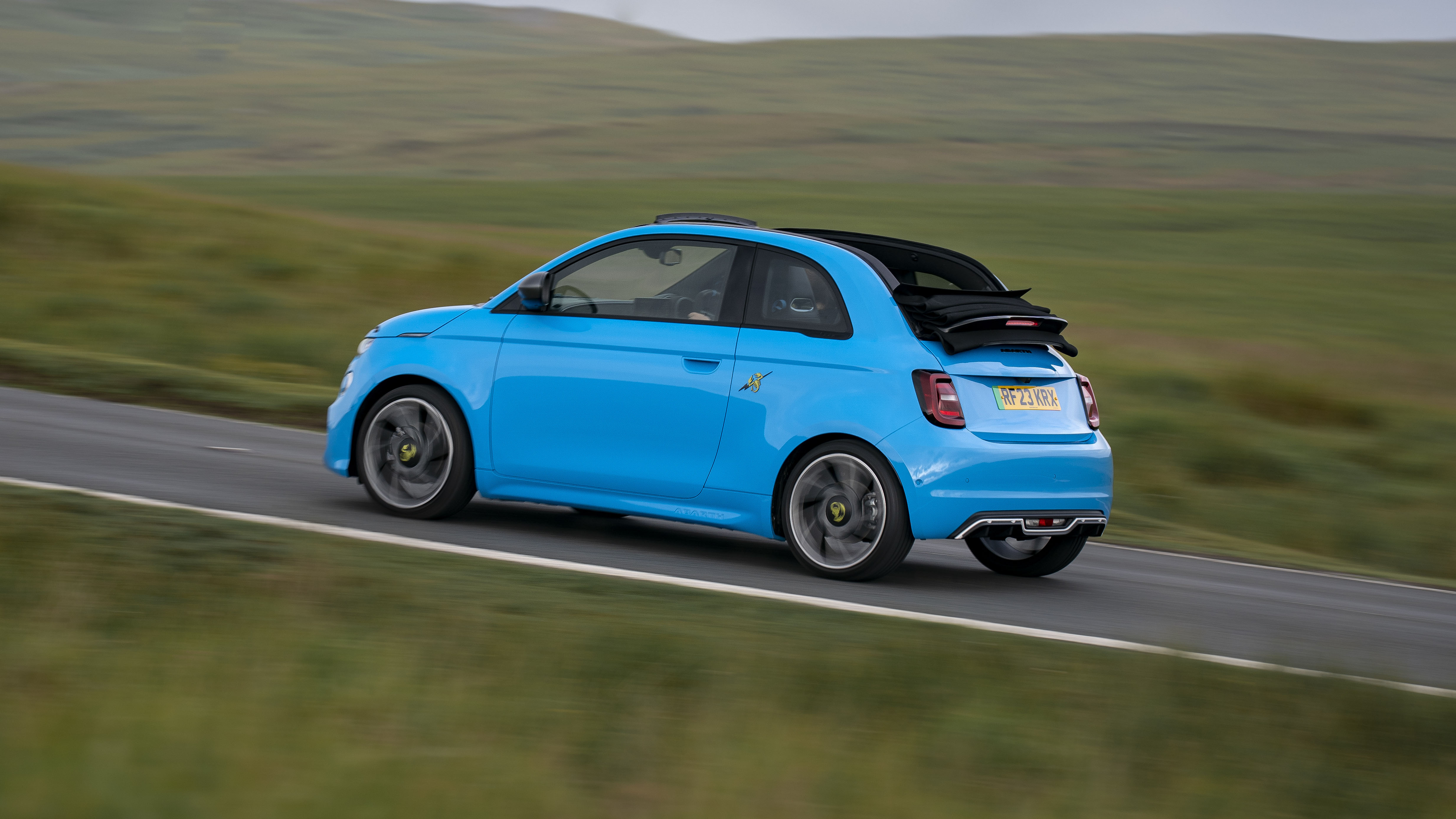
Good stuff
Feels precise, handling is engaging, noise generator adds a bit of fun...
Bad stuff
…but can also be irritating for passengers and passers-by. It’s not that quick, range isn't good
Overview
What is it?
Welcome to the first electric hot hatch. We'd define that as the souped-up version of an existing electric hatch. And here you get extra power, a stiffer suspension, spoilers, and a jazzier cabin. Since this is no longer the 1990s, we won't insist on red seatbelts.
So if it's the first electric hot hatch, it mustn't have rivals? Well, it does and it doesn't. The Mini Cooper Electric and Peugeot e-208 are roughly similar in size, but don't have the same sporty bent. The Honda e was killed off, and while the Cupra Born and Renault Megane are lively, they're bigger, dearer and not quite such party animals as the Abarth. The Hyundai Ioniq 5N is a riot, but in a different league to this.
The Abarth is based on the Fiat 500 electric, just like when Carlo Abarth himself began emboldening Fiat 500s back in the late 1950s. That brings a super compact electric hatchback, front-wheel drive and design that's a retro-modernised version of those 1950s themes.
They even gave it a sound generator designed to mimic a petrol engine. This was shaped with input from Abarth's rabidly active and loyal fanbase, as a means of keeping those petrolheads on side.
Ok, a hot hatch needs good numbers, so give me some.
Abarth says the 0-62mph time is 7.0 seconds, thanks to a 155bhp motor. That's what you might call toasty rather than searing performance. But of course the instant response of an electric motor does make up for an apparent shortfall in the figures.
The manufacturer says the battery pack holds 42.2kWh (37.3kWh useable), which... isn't big. Range then is a comparatively meagre 164 miles of WLTP. And that's for the one on 17-inch wheels, as the 18s cost seven miles of range. A cabrio roof costs another seven miles.
But an advantage of small batteries is they're light. This one is 295kg, and the overall weight of the car is 1,410kg: chunky for a supermini but light for an EV. That helps agility.
Yes, but is it actually fun?
It is. No, not the riot that some hot hatches are. But it goes smartly and corners convincingly. It's agile and engaging in bends, happy to gently squirm the tail on lift-off. The steering is accurate too. Click the Driving tab for more details.
It rides tautly but doesn't doesn't crash or judder. So it's on the liveable end of the spectrum. Much more than a petrol Abarth, which is frantic, noisy, unruly and uncomfortable. But just occasionally, more fun.
How do you turn a Fiat 500 into an Abarth?
Should be the start of a joke, but it’s actually a serious effort. It’s the same motor, a permanent-magnet job, given more juice by upgrades to the inverter and battery wiring. Another six per cent effective torque at the wheels comes from lowering the ratio of the single-speed drive.
The suspension is stiffer, and the steering more weighty. The rear brakes are stronger. Bigger tyres are special to the car. Usual hot hatchery then.
No great surprises for the design either: more assertive bumpers and air dams, a rear diffuser, but no actual improvement in aero efficiency. Plus some pretty sudden colour options.
Inside there's bolstered seats and, on the Turismo trim, Alcantara by the acre. The designers say the angular shapes are drawn from the Abarth scorpion's claws. And that the textures come from digital graphics. They did that because while Abarths with engines appeal to petrolheads, electric Abarths appeal to gamers too.
The loss in range versus the Fiat 500 – which gets up to 199 miles WLTP – stems from the faster-spinning motor, higher-resistance tyres and extra aero and cooling drag.
Shouldn't an Abarth be noisy?
Ah yes, and so is this. You can turn on an 'exhaust' sound generator. Really. There's a waterproof, mudproof speaker under the back of the car, and it makes an outward sound modelled on the optional Record Monza exhaust of the petrol Abarth 695. Prod the throttle at a standstill and it even makes a revvy noise. The noises continue as you drive, rising and falling in pitch and intensity with accelerator or brake pressure, so they alter as you sweep through bends.
Daft? Brilliant? A bit of both in truth. In town it must rather irritate people it passes, as it's at the legal volume limit for a petrol car. But on a twisty road it really does help you gauge speed into and through corners.
We're not sure why they couldn't have just piped the sound into the cabin speakers rather than beaming it outward. Guess that's the cheek of the thing.
Is there a cabrio version?
Just as with the Fiat 500, there's a rollback canvas roof on the menu. It's an agreeable thing for warm days when the drive is gentle. To call it a cabrio is a bit of a stretch; it’s more like a giant sunroof. Still, it's not too turbulent with the roof electronically opened, and it's quiet and snug when closed.
A cross country lope can only be enhanced by a bit of a connection with the surrounding greenery. It helps if the engine noise is turned off.
How much does it cost?
Prices for the hatch start from £34,195, and the Cabrio £37,195. Head over to the Buying tab for the full lowdown.
Our choice from the range

What's the verdict?
It's cramped and short in range, so can't do the job of a bigger petrol hatch. It never applied for that job anyway.
But it's nicely at home on B-roads or suburbs, using its small size and nifty responses to great advantage. And when you're not driving it like your backside's on fire, it's quiet and pretty civilised. However, you can't ignore that it's more expensive than a Mini Cooper Electric and, er, doesn't go as far.
It’s a neat little head turner that doesn’t quite make rational sense, but even if it's not for you, we can celebrate it because it shows that the new age of electricity doesn't mean the end of the hot hatch.
The Rivals
Trending this week
- Car Review
BMW 1 Series
- Top Gear's Top 9
Nine dreadful bits of 'homeware' made by carmakers










